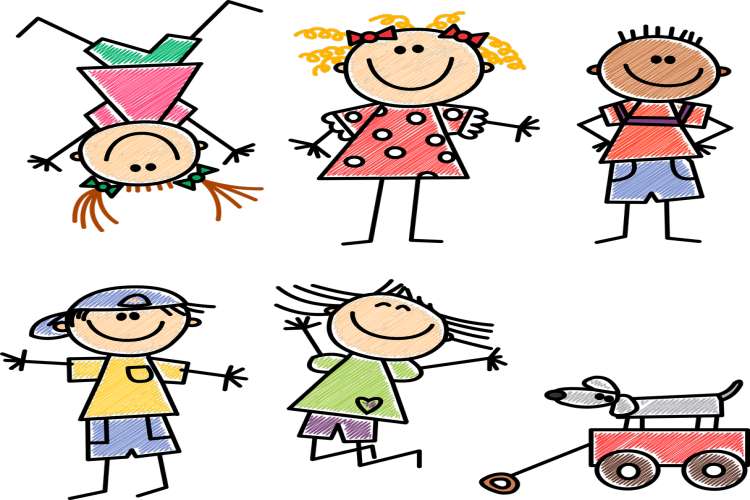Mathematics, the language of the universe, stands true as the common denominator in the world of both known and unknown.
It is a subject of wide diversity where one topic serves to bring us joy while the other makes us pull our hair in a mix of annoyance and failure to compute.
Whatever may be the case, it is to be agreed by not one but all that Maths as a subject holds universal validity because of its use in our day to day life.
And among the many wide-ranging topics that shape Maths into the integrated subject, it exists to be, there is one topic of great relevance in our daily existence.
Fractions.

Fractions and Their Daily Use
Whether it is to mark the paper of a student or divide a slice of Pizza, fractions are utilised both consciously and subconsciously within the daily happenings of our days.
And so, because of its wide reach and grave relevance, the teaching, as well as understanding of Fractions as a concept, should be taken fairly seriously.
But sadly fate is cruel in its play and often causes some children to be associated with comprehensive problems leading up to their inability to grasp concepts easily.
And so here we are to ensure this case does not spoil the fun that is fractions!
Also Read: Why is Learning Animal Names Difficult for Kids? How to Make It Easy for Them to Learn?

What is a Fraction for Kids?
Fractions for kids is how they can divide a cookie into two unequal parts to share the smaller piece with their brother and keep the larger one for themselves.
Jokes aside, fraction as a concept comes naturally to kids and adults alike. All that is needed is to teach them the relevant terms and names associated with them.
The best way to do so is to use fairly simple and easily comprehensible wordings and attractive and attention-grabbing examples.
Start by defining fractions.
What is a fraction for kids? Same as it is for adults, that is parts of a whole.
Say, for example, there is a Pizza divided into slices. What would each piece stand for in terms of the whole Pizza?
¼
And if the Pizza was divided into 2 equal parts?
½
Now that we know what a fraction is, let’s move to what it consists of.

The Three Parts of Fractions
A Fraction for children will be broken down as follows:
#The Numerator: the number that sits above or over the line.
#The Denominator: The number that sits below the line and the numerator.
#The Vinculum: The line or bar that separates the numerator from the denominator. It is also referred to as ‘the fraction bar.’
Let’s take, for example, fraction ¼
Here, 1 sits above the vinculum or fraction bar so it is referred to as the numerator. On the other hand, 4 sits below the fraction bar as well as numerator 1.
Hence, it is the denominator. Use more examples to drive the lesson further home.
Now, let’s move on to the types of Fractions.
Also Read: What is Engineering for Kids? Let Your Kids Take a Step Towards Success

Fraction for Children
Do note that while explaining this part of the lesson to Children With Special Needs, it is best to use attractive visual lesson aids such as shimmering flashcards or physical items pertaining to your examples. Cutouts are also a good idea.
Whatever you explain, explain it with examples and the more visual the examples the easier it will be for them to comprehend.
Also, try to make the class as interactive as possible.
If you constantly engage them into participating in your teachings then it will be easier for them to give you their attention and for you to hold it.
Rewarding them for their participation as well as applauding their progress can play a pivotal role in their development.
So, encourage them with positive reinforcement whenever possible.
Fraction Activities for Children with Special Needs
One fairly good way to teach children about fractions is by doing activities with them. This may involve games, drawings or even peer learning if possible.
You can, for example, ask the students to draw a pie in their notebook and then divide it into five slices. The image where the Pie is a whole will have a whole number signifying it written below the image.
Visual Aids for Learning
The slices, on the other hand, will have the relevant fraction written below them.
They should be encouraged to make the drawings as colourful as they want.
Another activity can be to host a game or a quiz match among the students by dividing them into 4 columns and giving them relevant scores based on correct and incorrect answers.
Practical examples using physical objects such as balls or chocolates can also be used to make the lesson engaging and attention-grabbing.
The use of cutouts, charts, and modules should also be taken into account alongside small revisions for two to three minutes each day.
Also Read: 9 Fun Typing Games for Kids: Improve Your Kid’s Typing Skills in a Fun Way
Conclusion-
Fractions is one such topic of Maths that brought joy to a majority of its practitioners.
It cemented a widely known but not so widely agreed truth that when you understand what you are solving Maths starts to be more fun.
This post was a small attempt towards making sure that the above idea holds true for Children who are a little slow in learning concepts as well.
After all, hurdles come and go, but Maths is forever!
If you have any queries pertaining to this topic then the comment sections are open and yours to use. Our team is more than happy to reply as soon as possible.
Happy solving!
If you would like to receive more tips and tricks about fractions and all subjects galore, then click here: The Real School Of Montessori.







